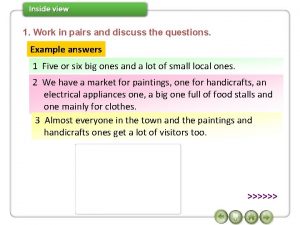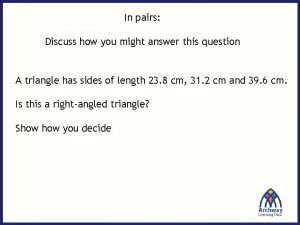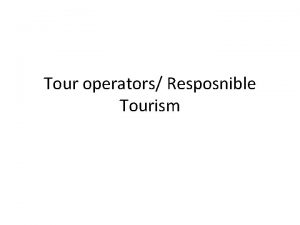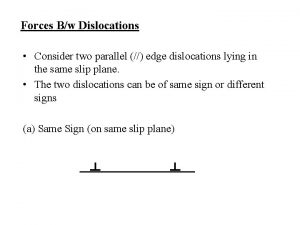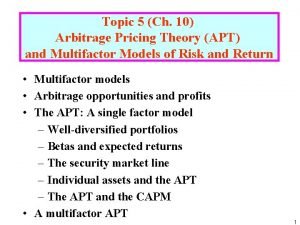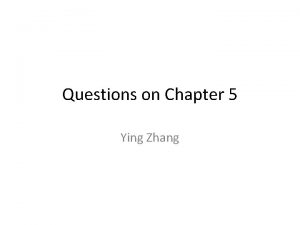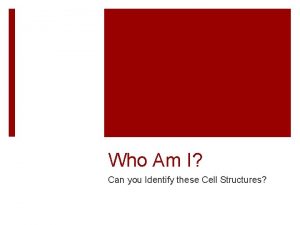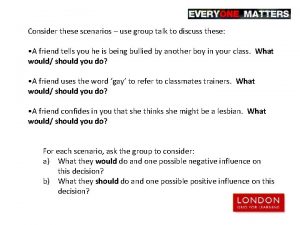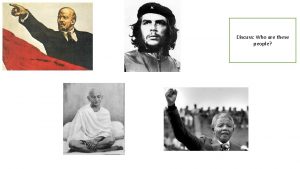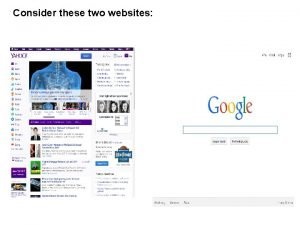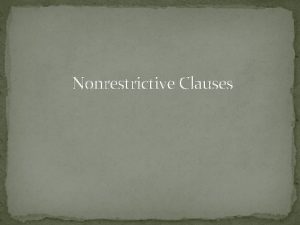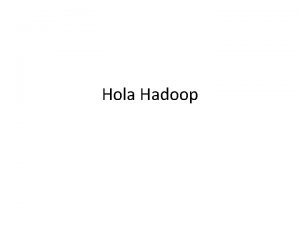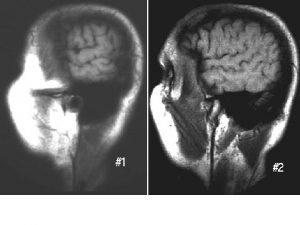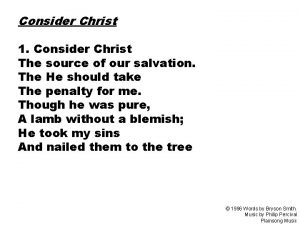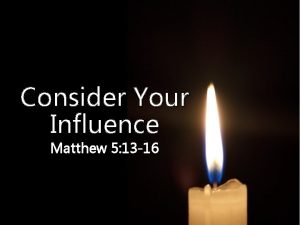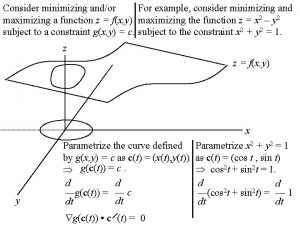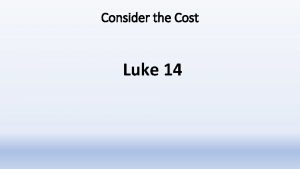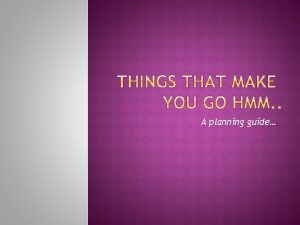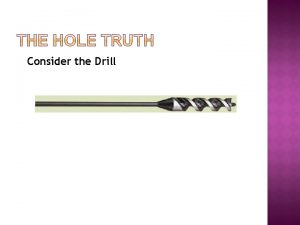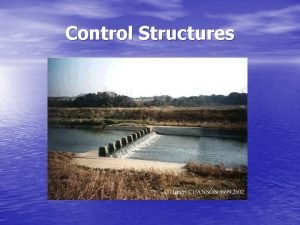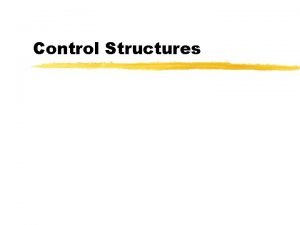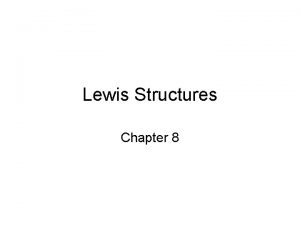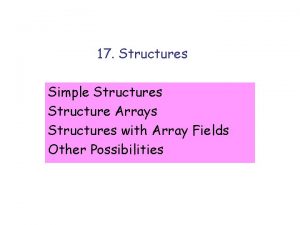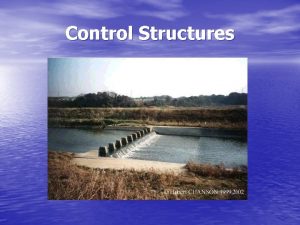Please discuss these two structures Please consider the
























































- Slides: 56

Please discuss these two structures. Please consider the purpose, the architectural style, and the patron(s) who commissioned each.

Taj Mahal, Agra, India Mughal period 1632 -1648 Amiens Cathedral begun in 1220; almost “complete” by 1375

Please discuss how each artist represents perspective.






Please discuss these two representations of mythic females.

Sandro Botticelli The Birth of Venus 1484 -86 Jan van Eyck The Ghent Altarpiece Eve 1425 -29 oil on wood, Cathedral of St. Bavo, Ghent

Please discuss how each artist represents the landscape. Please consider issues like how the figure is represented in the landscape, what the artist may be trying to argue with this representation of the landscape, and way that the artist creates the illusion of depth (perspective).

Hunters in the Snow (January) Pieter Bruegel the Elder 1565

Landscape Shitao Leaf from an album of landscapes Qing dynasty c. 1700 Ink and color on paper

In each of these works, the artist is making an argument that is based on the doctrines of their religion. Please uncover each argument and please discuss how the work makes this argument visually. You will, of course, have to touch on each religion to provide context for your discussion.

Matthias Grunewald 1510 -1515 center panel from the Isenheim Altarpiece: Crucifixion

Monk Sewing Ninga Kamakura period, early 14 th century ink on paper

Kuya Preaching Kosho Kamakura period before 1207 painted wood

Please compare these two works.

Duccio di Buoninsegna 1278 -1318 (active) Maesta Altarpiece 1308 -1311 Siena detail: Entry into Jerusalem

Hour of Cowdust Punjab Hills, India Mughal period c. 1790 gouache on paper

Please compare the tone of each of these landscapes. Make sure that you offer visual evidence that allows you to link your assertions about tone to the actual work itself.

Landscape Bunsei Muromachi period, mid-15 th century hanging scroll, ink and light colors on paper

El Greco View of Toledo 1610 oil on canvas

in situ Please discuss these three works. Discuss how their context affects these three pieces. If appropriate, please consider how the context affects the actual object that was made, the argument that the work makes because of its context, and the problem that the context created as well as the solution that the artist created to this contextual challenge.




perspective Please discuss how the perspective is represented in these three works. If appropriate, please discuss the development of perspective as evidenced by these three different representations of space; consider not only how perspective is rendered but also what the artist seemed to be privileging or using perspective to argue.





light Please discuss what light is meant to argue, represent, or accomplish in each of these three works.





the human form Please discuss what the human form is meant to argue or represent in each of these works.






patronage and politics Please discuss how each of these works of art reflects a political argument and/or is used to exert or retain power.





authority Please discuss how each of these works of art constructs authority.




miracles Please discuss how each of these works of art presents a miraculous event.



 Amateurs talk strategy professionals talk logistics
Amateurs talk strategy professionals talk logistics Work in pairs answer the following questions
Work in pairs answer the following questions Work in pairs discuss what is common
Work in pairs discuss what is common Activity 9 work in pairs discuss the following questions
Activity 9 work in pairs discuss the following questions Look at these pictures and answer the following questions
Look at these pictures and answer the following questions Answer the questions
Answer the questions Discuss these questions with a partner
Discuss these questions with a partner Discuss the following questions with a partner
Discuss the following questions with a partner In pairs discuss the questions
In pairs discuss the questions Discuss these questions with your partner
Discuss these questions with your partner Discuss these questions with a partner
Discuss these questions with a partner Function of homologous structure
Function of homologous structure Consider two edge dislocations of opposite sign
Consider two edge dislocations of opposite sign Model apt
Model apt Consider a case of a two-component standby system
Consider a case of a two-component standby system Show that the maximum efficiency of pure aloha is 1/(2e)
Show that the maximum efficiency of pure aloha is 1/(2e) Can you identify these cell structures answer key
Can you identify these cell structures answer key Nobody said anything raymond carver
Nobody said anything raymond carver What is the least competitive market structure
What is the least competitive market structure Hình ảnh bộ gõ cơ thể búng tay
Hình ảnh bộ gõ cơ thể búng tay Bổ thể
Bổ thể Tỉ lệ cơ thể trẻ em
Tỉ lệ cơ thể trẻ em Voi kéo gỗ như thế nào
Voi kéo gỗ như thế nào Chụp tư thế worms-breton
Chụp tư thế worms-breton Chúa sống lại
Chúa sống lại Môn thể thao bắt đầu bằng từ chạy
Môn thể thao bắt đầu bằng từ chạy Thế nào là hệ số cao nhất
Thế nào là hệ số cao nhất Các châu lục và đại dương trên thế giới
Các châu lục và đại dương trên thế giới Cong thức tính động năng
Cong thức tính động năng Trời xanh đây là của chúng ta thể thơ
Trời xanh đây là của chúng ta thể thơ Mật thư tọa độ 5x5
Mật thư tọa độ 5x5 Làm thế nào để 102-1=99
Làm thế nào để 102-1=99 độ dài liên kết
độ dài liên kết Các châu lục và đại dương trên thế giới
Các châu lục và đại dương trên thế giới Thể thơ truyền thống
Thể thơ truyền thống Quá trình desamine hóa có thể tạo ra
Quá trình desamine hóa có thể tạo ra Một số thể thơ truyền thống
Một số thể thơ truyền thống Cái miệng bé xinh thế chỉ nói điều hay thôi
Cái miệng bé xinh thế chỉ nói điều hay thôi Vẽ hình chiếu vuông góc của vật thể sau
Vẽ hình chiếu vuông góc của vật thể sau Nguyên nhân của sự mỏi cơ sinh 8
Nguyên nhân của sự mỏi cơ sinh 8 đặc điểm cơ thể của người tối cổ
đặc điểm cơ thể của người tối cổ Thế nào là giọng cùng tên? *
Thế nào là giọng cùng tên? * Vẽ hình chiếu đứng bằng cạnh của vật thể
Vẽ hình chiếu đứng bằng cạnh của vật thể Tia chieu sa te
Tia chieu sa te Thẻ vin
Thẻ vin đại từ thay thế
đại từ thay thế điện thế nghỉ
điện thế nghỉ Tư thế ngồi viết
Tư thế ngồi viết Diễn thế sinh thái là
Diễn thế sinh thái là Dot
Dot Số nguyên tố là
Số nguyên tố là Tư thế ngồi viết
Tư thế ngồi viết Lời thề hippocrates
Lời thề hippocrates Thiếu nhi thế giới liên hoan
Thiếu nhi thế giới liên hoan ưu thế lai là gì
ưu thế lai là gì Hổ sinh sản vào mùa nào
Hổ sinh sản vào mùa nào


